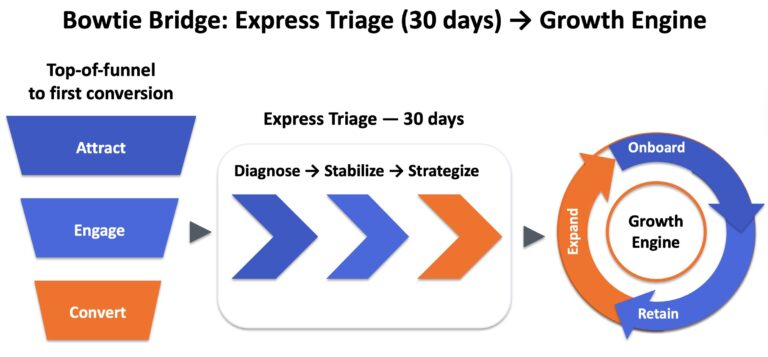
Digital marketing for MSPs should be judged by one thing: does it generate more meetings with qualified buyers? Not clicks. Not impressions. Meetings. The teams that win keep tactics simple and concentrate on five drivers: demand capture, conversion‑ready revenue pages, speed‑to‑lead, proof that wins the “zero‑click” check, and clean signals that let platforms optimize to real leads.
Good means your plan reliably turns search intent into booked calls, and your weekly page proves it: pipeline by source, revenue‑page conversion, actions per 1,000 views on Google Business Profile, speed‑to‑lead, and percent of conversions with valid UTMs. If a metric drops, address the issue before adding more tactics.
Don’t spread thin across every channel. Cover the money terms first: Local or National SEO (pick one scope for 90 days) and Non‑brand PPC for high‑intent searches. Protect Brand with a small budget, but don’t let it cannibalize Non‑brand.
Result: more qualified searchers reach a page designed to convert in under ten seconds.
Every click should land on a page that answers three questions above the fold: what you do, why you’re safer/faster/better than the next MSP, and what to do next. Repeat the primary CTA at the bottom and give a sensible secondary action.
Patterns that convert are in Website Design & Optimization. Use the ten‑second skim test with someone outside IT.
Most lost meetings are operational, not marketing. Route every form, chat, and scheduler to a human with instant alerts and a fallback for off-hours. Aim for first touch in five minutes or less and instrument phone taps, schedule submits, and forms so the source and landing page reach the CRM.
Use Marketing Automation for alerts, routing, and short welcome/nurture sequences. Then sanity‑check your event names in GA4 (events guide).
Before visitors click, they judge you in search results, listings, and social. Publish case vignettes with numbers, keep recent photos and owner‑answered Q&A on your profile, and reply to reviews with specifics. Inside posts and pages, place short FAQs near the CTA so evaluators can say “yes” faster.
Outcome: higher actions per 1,000 views from Google Business Profile and better page conversion when they do click.
Stop sending junk “conversions” (scrolls, time‑on‑page) into ad platforms. Standardize UTM parameters, add hidden fields to capture source and landing page, and import Qualified and Closed‑Won back into ads (offline conversion import). Review signal quality weekly so bidding learns from meetings—not micro‑events.
Use the Reporting & Analytics pillar to keep a one‑page executive view current.
Every Friday, look at the same handful of numbers: non‑brand share, revenue‑page conversion, actions per 1,000 views, speed‑to‑lead, and percent of conversions with valid UTMs and a landing page. Call one risk and one decision. Ship the fix before chasing a new channel.
Days 1–30: Pick scope (Local or National), fix tracking, publish or repair the top revenue pages, tighten PPC message match, and make speed‑to‑lead a non-issue.
Days 31–60: Expand coverage to the next service/city or category/comparison pages. Add two proof assets and a review engine tied to positive moments. Tune bids using offline conversion signals.
Days 61–90: Scale Non‑brand cautiously, keep testing page clarity, and add a simple nurture path from content to consultation.
If you want a structured push, run a 30‑day triage to stop the obvious leaks, publish the right pages, and wire the weekly view. Then roll into a monthly cadence that compounds what works.
Related pillars: Local or National SEO • PPC Advertising • Website • Marketing Automation • Reporting & Analytics
Fix the five biggest leaks in 30 days—then scale what works.
Start with demand capture: the right SEO scope and Non‑brand search ads. Add retargeting and proof distribution later, after revenue pages and tracking are stable.
Under five minutes for first touch. Set instant alerts, a fallback owner, and measure median speed‑to‑lead weekly.
Plain‑English value, proof with numbers, and one primary CTA. Mirror the query or ad message and keep the phone obvious on mobile.
Show before/after on a one‑page view: non‑brand share, revenue‑page CVR, actions per 1,000 views, speed‑to‑lead, and % of conversions with valid UTMs.